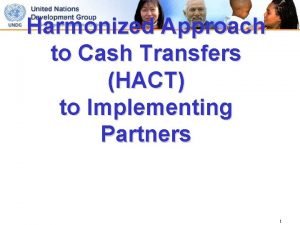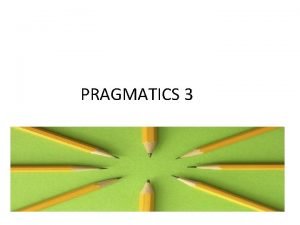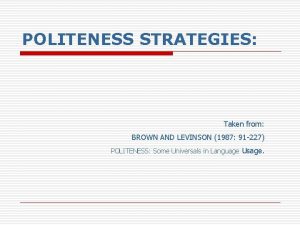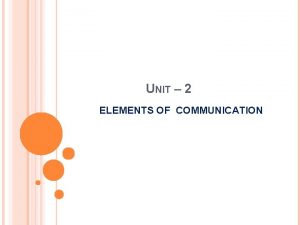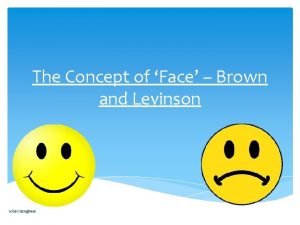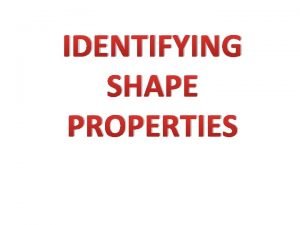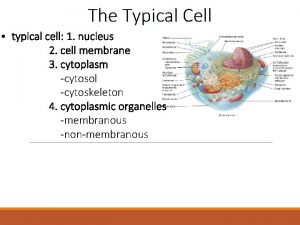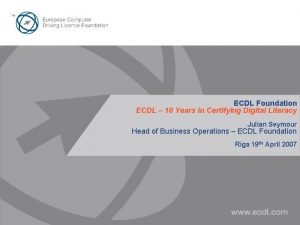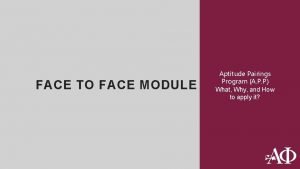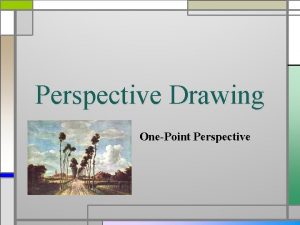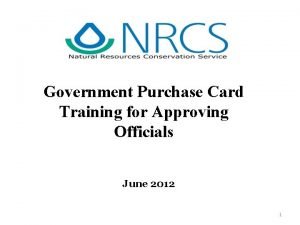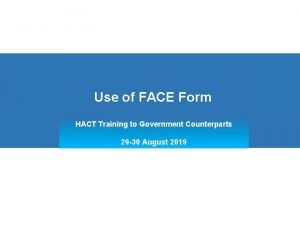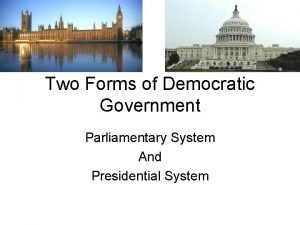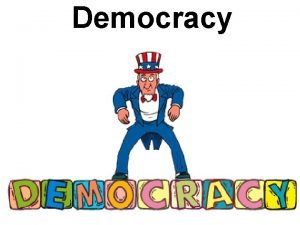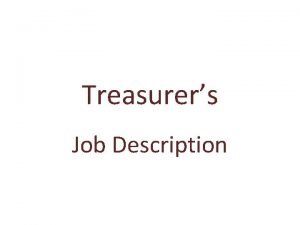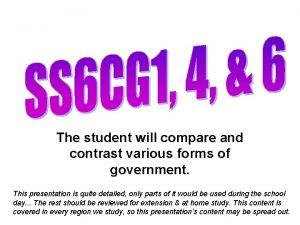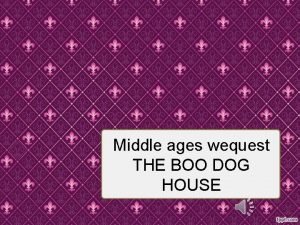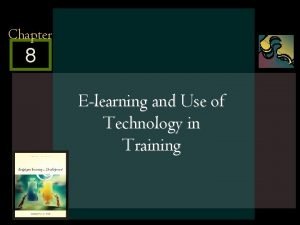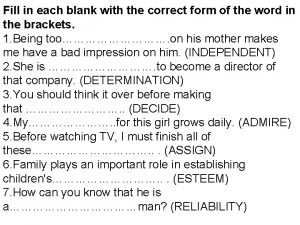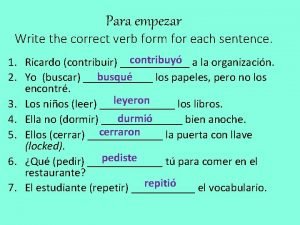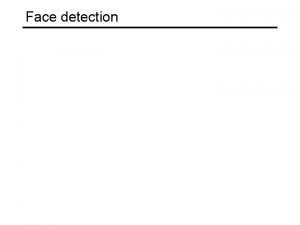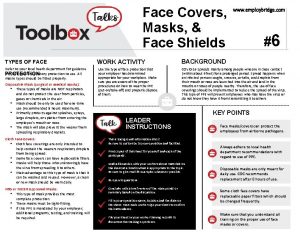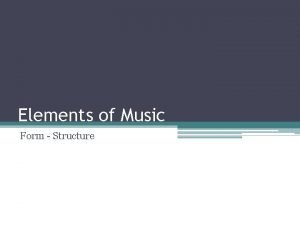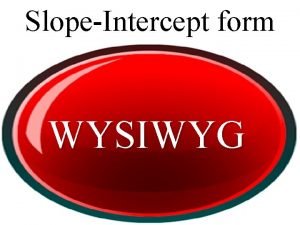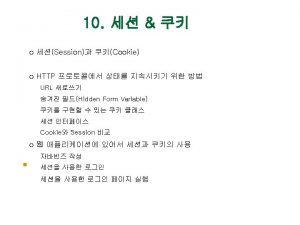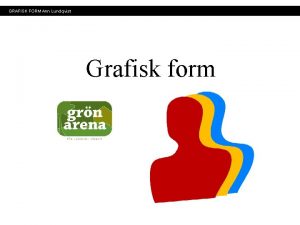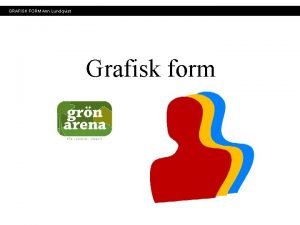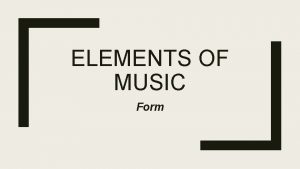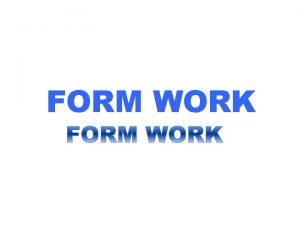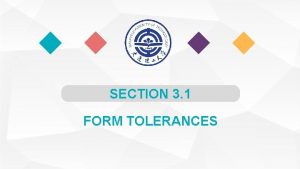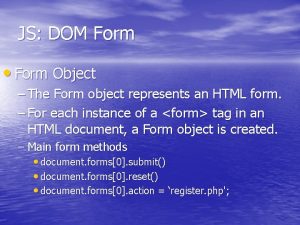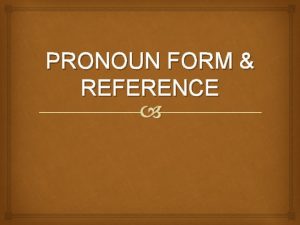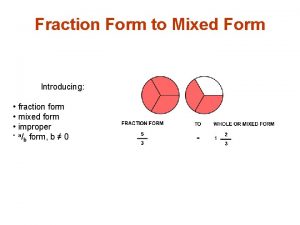Use of FACE Form HACT Training to Government









































- Slides: 41

Use of FACE Form HACT Training to Government Counterparts 29 -30 August 2019

Introduction q Funding Authorization and Certificate of Expenditure (FACE) Form q Who needs to use: all UNICEF and implementing partner staff involved in the management of resources and results in relation to cash transfers from UNICEF. It may also serve other UN colleagues to familiarize themselves with the FACE form. q For more details: The Harmonized Method for Cash Transfers (HACT) (UNICEF Agora)

Objectives q The FACE form is a simplified and harmonized form that replaces agency-specific reporting formats and documentation to support implementing partner requests for expenditure. q This presentation will focus on how to complete the FACE form for requesting cash transfers from UNICEF and reporting on actual programme expenditures. q At the end of this presentation you will be able to: § Identify the key parts of the FACE form § Correctly use the FACE form for requesting cash transfers from UNICEF and reporting programme expenditures § Describe the specific requirements and responsibilities for using the FACE form

THE FACE FORMINTRODUCTION

What is the FACE Form? q FACE stands for Funding Authorization and Certificate of Expenditure.


FACE Form Uses q The FACE form is used by all implementing partners to request and report on actual programme expenditures q It is used by UN agencies that have adopted HACT to authorize, disburse and record expenditures of cash transfers made to implementing partners

FACE Form Uses all three cash transfer modalities q The FACE form is used for all three cash transfer modalities, namely Direct Cash Transfer (DCT), Direct Payment and Reimbursement. As a recap § DCT - funds are transferred to implementing partner before the partner incurs expenditures to support activities agreed in the work plan § Direct Payment – Funds are paid to directly to vendors or third parties for obligations incurred by partner in support of agreed activities § Reimbursement – funds are provided to the implementing partner for expenditures incurred in support of agreed activities. q One FACE is used for each type of cash transfer modality.

Structure of The FACE form q The FACE form can be divided into: 7 Areas § Header Area § Activity Description Area § Reporting Area § Request/ Authorization Area § Certification Area § For Agency Use only area § Coding column

FACE form Structure 1. 3. Header Area Reporting Area 2. Activity descript ion area 4. Request/ Authorizati on Area 5. Certificati on area

Structure of the FACE Form (Cont’d) q The Header Area of the FACE form contains the following data elements: § § § § § Name of the Agency to which FACE is being submitted Date of the request Type of request ( direct cash transfer, direct payment, reimbursement) Country where the programme takes place Programme code & Title-for UNICEF this is the Title & Out come # Project code & Title (out put # & Title as per work plan or Programme Document) Responsible officer(s) – The designated official(s) of the implementing partner & email Workplan code & Title: Program Document reference Implementing Partner Name Currency of the request/ disbursement –usually the currency of the programme country

Structure of the FACE Form (Cont’d) § The Header area is to be completed by Implementing Partner § It allows the Implementing Partner to report on the reason for and purpose of the funding/reporting request.

Structure of the FACE Form (cont’d) Activities Description Short description of the activity as it appears in the underlying Work Plan (e. g. multi-year work plan, rolling work plan, annual work plan)/programme document and its duration The Activity Description area is to be completed by the implementing partner

Structure of the FACE form (cont’d) q Column A & B - To be completed by implementing partner q Column C & D - To be completed by UNICEF

Reporting Area q Used to report the programme expenditures incurred in the reporting period q FACE is a dynamic form that must balance and reconcile from one reporting period to the next ØColumn A – Authorized Amount: repeats the last one, Column G, from the previously submitted and authorized FACE form in the case of DCT and Column F in the case of Direct Payment & Reimbursement ØColumn B – Actual Expenditures by the IP for the period based on financial records ØColumn C – Expenditures Accepted by Agency ØColumn D – Balance of funds – unspent balance from previous quarter

Request/ Authorization Area q Used to request the funds to be used in the new implementation period not exceeding 6 months q Column E- To be completed by implementing partner q Column F&G - To be completed by UNICEF

Certification Area CERTIFICATION: The undersigned authorized officer of the above-mentioned implementing institution hereby certifies that: □ The funding request shown above represents estimated expenditures as per AWP and itemized cost estimates attached. □ The actual expenditures for the period stated herein has been disbursed in accordance with the AWP and request with itemized cost estimates. The detailed accounting documents for these expenditures can be made available for examination, when required, for the period of five years from the date of the provision of funds. • Is used by implementing partner to certify the accuracy of the data and information provided • Should contain Title and Signature of the designated official of the Implementing Partner and Date of submission Date Submitted: _______ Name: ________Title: ______

For Agency Use Only • Approvals Box – • Is signed by the appropriate approving officer of the UN agency who also provides his/her Name and Title and date when approval is granted • Signing of the box indicates that the request for funds has been certified and approved and/or authorizes recording of the reported expenditures in Vision

For UNICEF Use Only • For UNICEF Use only Box is used by UNICEF Programme Manager • To certify that the request/authorization is in accordance with the work plan/ programme document and UNICEF guidance • To certify that he/she has reasonable assurance that the activities have taken place as reported by the implementing partner.

COMPLETING THE FACE FORM

Itemized Cost Estimate (ICE) Partner Name: ACTED Request Period: Oct-Dec. 2018 Programme doc ref: Education in affected area - ORE Item Description Unit Quantity Item No. Output 1 Activity 1. 1 Community-based Organize management training of 500 of SAM health introduced workers 1 Venue and facilities days 2 Daily subsistence allowances Participants participant 4 Transportation for 275 participants – bus fare refund 5 Consultant fees in Unit price /cost Total Amount 200 villages In 10 districts community nutrition in 10 districts 7 1, 200 8, 400 300 60 18, 000 Participants 300 10 3, 000 days 21 450 9, 450 Sub-total 38, 850 TOTAL OUTPUT 1 Output 2 Act 2. 1 Effective 38, 850 and programme management In-country management & support staff salaries related to the programme 1 Country Director Months x 5% 3 10, 500 1, 575 2 Finance Manager Months x 5% 3 6500 975 3 Driver Months x 50% 3 900 1, 350 Sub-total Act 2. 2 Operational costs related to the programme efficient 3, 900 1 Office rent Months X 20% 3 2, 400 1, 440 2 Utilities and maintenance Months X 20% 3 250 150 Sub-total TOTAL OUTPUT 2 TOTAL PROGRAMME COSTS 1, 590 5, 490 44, 340


Certification and Approval of DCT Request in UNICEF q Upon receipt of the FACE form requesting for the DCT from the implementing partner the UNICEF Programme Manager § Reviews the FACE form to ensure that § It has been signed by the IP’s designated official § it is correctly completed and mathematically accurate § Resources being requested have not been previously transferred

Certification and Approval of DCT Request in UNICEF the UNICEF Programme Manager § Completes columns F to accept or amend or reject the amounts being requested § Completes column G by indicating approved amounts against each activity § Certifies that the request is in accordance with the agreed work plan/programme and UNICEF guidance § Certifies that the ICE is attached and that cost estimates are reasonable within the country context. § UNICEF Approving Official signs the Approval Box, indicates his/her name and the date. q The FACE form is now ready for financial processing in UNICEF.


Reporting utilization of DCT q The implementing partner completes: §Column B of the Reporting area by indicating actual expenditures based on its underlying financial records §Certification area by § checking the second box § Signing the FACE form, indicating title and date.

Certification and Approval of FACE Report in UNICEF q Upon receipt of the FACE report, the UNICEF Programme Manager: §Reviews the report to ensure that § It is signed by the designated official § The arithmetic is correct § The expenditures are in accordance with work plan/programme document and UNICEF guidance

Certification and Approval of FACE Report in UNICEF q Upon receipt of the FACE report, the UNICEF Programme Manager: § Completes Column C by either accepting, amending or rejecting the reported amounts against each activity based on him /her having reasonable assurance that activities have taken place as reported by the partner § Completes Column D to show balances

Certification and Approval of FACE Report in UNICEF q After review by the Programme Manager, the appropriate approving officer completes the Approval Box q Operations (Finance) reviews the FACE form for completeness and mathematical accuracy and records the expenditures in Vision (liquidation)

Reporting DCT utilization & Requesting new DCT q The FACE form can be used to report on previously received DCT and at the same time request a new DCT for the subsequent quarter. q The implementing partner completes § The Header Area § The Activity Description Area § Columns A and B to report expenditures of previous DCT § Column E to request DCT for the next quarter § Certification Area by checking both boxes and signing off.

SUPPORTING DOCUMENTATION SUBMITTED WITH FACE FORM

The Itemized Cost Estimate q The Itemized Cost Estimate (ICE) is a breakdown of the activity budget into specific inputs required to implement each activity q The ICE quantifies and provides an estimated cost of each input required in the implementation of the activities for which funding is requested/authorized. q It helps the implementing partner to accurately estimate the resources needed for each activity. q It can also be referred to as a detailed activity budget

Itemized Cost Estimate cont’d q There is no specific template for preparing the ICE. Implementing partners can use their financial systems to provide the cost estimates. At a minimum the ICE should contain the following information: § Description of each input required for the implementation of the activity § Quantity § Unit price or cost where applicable § Total input estimated cost; and § Total amount for the activity, which should be equal to the requested amount on the FACE form.

The ICE: Example An example of the Ice is as shown below for one activity. q Itemized Cost Estimate; April- June 2015 Item No. Item Description Unit Quantity Unit price /cost Total Amount Output 1 Community-based management of SAM introduced in 200 villages In 10 districts Activity 1. 1 Organize training of 500 health workers in community nutrition in 10 districts Quarter 1: training of 300 health workers in community nutrition in 7 districts. 1 Venue and facilities days 7 1, 200 8, 400 2 Daily subsistence allowances 21, 120 3 Participants participant 300 60 18, 000 4 Programme manager days 10 60 600 5 Programme officer days 14 60 840 6 Programme support staff (2) days 14 x 2 60 1, 680 7 Transportation for 275 participants – bus fare refund Participants 300 10 3, 000 8 Consultant fees days 21 450 9, 450 9 Transportation for consultant - air fare ticket 7 1, 000 7, 000 10 Training materials Lump sum 1 500 740 11 Communication Lump sum 1 290 Total 50, 000

Poor preparation of ICE

ROLES AND RESPONSIBILITIES

Roles and Responsibilities q Implementing Partner §Prepares and submits requests for funding §Prepares and submits reports of actual programme expenditures

Roles and Responsibilities q Implementing Partner’s Designated Official § Certifies that the request represents estimated expenditures as per work plan/programme document and the an ICE is attached § Certifies that the reported expenditures were disbursed in accordance with the work plan or programme document and ICE § Certifies that financial records and supporting documentation related to the reported expenditures would be made available for examination, when required, for a period of 5 years from the day of disbursement of funds

Roles and Responsibilities q UNICEF Programme Manager § Reviews the FACE form for completeness § Certifies that the FACE form has been signed by the designated official of the implementing partner § Certifies that requests are in accordance with work plan/programme document and UNICEF guidance

Roles and Responsibilities q UNICEF Programme Manager § Certifies that he/she has reasonable assurance that activities took place as reported by the implementing partner § Certifies that the itemized cost estimate is attached and that cost estimates are reasonable within the country context § Shares with the partner a copy of the approved FACE form.

END
 Hact framework
Hact framework Hact assessment
Hact assessment Negative politeness examples
Negative politeness examples Off record politeness
Off record politeness Face-to-face narrative examples
Face-to-face narrative examples Face to face communication definition
Face to face communication definition Pros and cons of telephone interviews
Pros and cons of telephone interviews Face theory brown and levinson
Face theory brown and levinson What shape
What shape Onomatopoeia romeo and juliet
Onomatopoeia romeo and juliet Phospholipid bilayer
Phospholipid bilayer Face to face class
Face to face class Face to face ecdl
Face to face ecdl National powers
National powers Face aptitude training
Face aptitude training Ancient egypt
Ancient egypt Literary elements drama
Literary elements drama Present continuous tense interrogative
Present continuous tense interrogative Government travel card training
Government travel card training Government purchase card training slides
Government purchase card training slides Government proposal writing training
Government proposal writing training Face form undp
Face form undp Types of government
Types of government Presidential republic
Presidential republic Local government service appraisal form
Local government service appraisal form Merits of parliamentary government
Merits of parliamentary government Example of a republican form of government
Example of a republican form of government Arp form of government
Arp form of government Foundations of government (chapter 1 test form a)
Foundations of government (chapter 1 test form a) Parliamentary system vs presidential system
Parliamentary system vs presidential system Around 900 ce a new form of government called
Around 900 ce a new form of government called Training is expensive without training it is more expensive
Training is expensive without training it is more expensive Metode of the job training
Metode of the job training Aggression replacement training facilitator training
Aggression replacement training facilitator training Yawnproof
Yawnproof How you use ict today and how you will use it tomorrow
How you use ict today and how you will use it tomorrow Form content and use
Form content and use Enemas are the liquid dosage forms used
Enemas are the liquid dosage forms used Write 5 sentences
Write 5 sentences Tasty superlative form
Tasty superlative form Fill the blank with the correct
Fill the blank with the correct Write the correct form of verb
Write the correct form of verb

